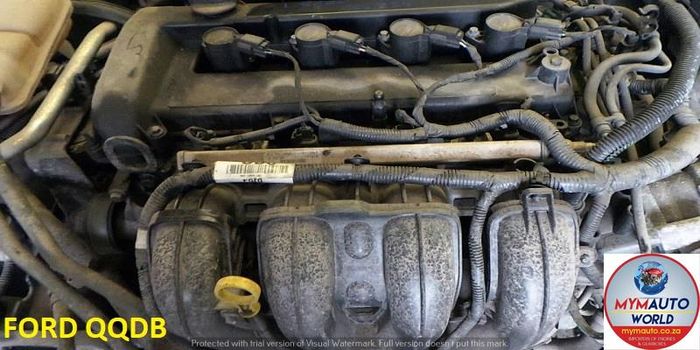Where to Discover the most effective Opel Corsa Engine for Replacement
Where to Discover the most effective Opel Corsa Engine for Replacement
Blog Article
Discovering the Inner Workings of a Compact Vehicle's Engine System
As vehicle drivers, we usually take for approved the complex processes that happen within the boundaries of our automobile's engine system. In this exploration of a portable car's engine system, we will untangle the inner operations of this mechanical symphony, dropping light on the mysteries that drive us onward on our daily trips.
Burning Refine Review
The combustion process in a compact vehicle's engine system is a critical system that efficiently transforms gas into power to power the car. This process happens within the combustion chamber of the engine, where gas and air mix, fire up, and create regulated surges. The combustion process consists of four primary stages: consumption, power, exhaust, and compression.
During the intake phase, the piston moves downward, drawing in a mix of air and gas into the burning chamber. The following phase, compression, involves the piston relocating up, pressing the air-fuel combination to enhance its potency. Consequently, in the power phase, the ignition system fires up the pressed mixture, resulting in a fast expansion of gases that compels the piston back down. This down activity generates the power needed to drive the lorry. In the exhaust phase, the burnt gases are expelled from the combustion chamber via the exhaust valve, preparing the chamber for the next cycle. This cyclic combustion process is essential to the procedure of a compact lorry's engine system, guaranteeing reliable power conversion for propulsion.
Piston and Cylinder Communication

The piston's specific fit within the cylinder is necessary for maintaining optimum compression and protecting against power loss throughout burning. Limited clearances in between the piston and cylinder walls make sure efficient securing, enabling the piston to move efficiently without permitting gases to leak past. Proper lubrication is likewise important to lower rubbing and wear between these parts, boosting long life and efficiency.
Moreover, the layout and materials made use of in making the piston and cyndrical tube effect engine effectiveness and resilience. Modern engines usually use light-weight yet durable products like aluminum alloys for pistons and cyndrical tube linings to decrease inertia and enhance thermal performance. In general, the unified communication in between the piston and cyndrical tube is essential to the engine's functionality and total efficiency.
Fuel Injection System Performance
Fuel injection systems in compact lorry engines play an essential function in exactly delivering gas to the burning chamber for efficient and regulated ignition. The fuel injection system functions by infusing gas into the burning chamber at the useful link optimal moment during the engine's procedure (opel corsa engine). This specific timing guarantees that the gas mixes evenly with the air for appropriate combustion, leading to enhanced gas performance and decreased emissions
There are largely two kinds of gas injection systems made use of in compact vehicle engines: port gas shot (PFI) and direct fuel injection (DFI) PFI systems infuse gas into the intake port before the consumption shutoff, while DFI systems inject gas straight into the burning chamber. Both systems have their advantages, Read Full Report with DFI using far better gas atomization and PFI offering a much more economical remedy.
Recognizing Engine Air Conditioning Mechanisms
Effective procedure of a compact car's engine counts greatly on the effectiveness of its cooling mechanisms. The air conditioning system in a compact automobile usually consists of a number of parts functioning together to regulate the engine temperature. Comprehending these engine air conditioning systems is crucial for maintaining the performance and longevity of a small automobile's engine system.

Exhaust System Elements Explained
The ideal functioning of a small car's engine air conditioning devices depends on a complementary system understood as the exhaust system, which makes up numerous essential parts for ensuring effective exhausts and engine efficiency. The exhaust manifold gathers exhaust gases from the engine's routes and cyndrical tubes them to the catalytic converter.
One critical part of the exhaust system is the oxygen sensor, which monitors the oxygen degrees in the exhaust gases to help regulate gas consumption and make sure optimum engine performance. opel corsa engine. Furthermore, the resonator may be present in some exhaust systems to decrease sound degrees. On the whole, the exhaust system plays a crucial function in preserving engine effectiveness, decreasing hazardous emissions, and ensuring a quieter driving experience for portable lorry owners

Conclusion
Finally, the compact car's engine system is an intricate combination of parts that interact to assist in the combustion procedure, convert fuel right into power, and get rid of waste gases. Understanding the internal functions of click for more info the engine system, including the piston and cylinder interaction, fuel shot system, engine cooling mechanisms, and exhaust system components, is essential for maintaining ideal efficiency and efficiency of the lorry.
The combustion process in a small lorry's engine system is a crucial system that efficiently converts gas right into energy to power the car.Fuel shot systems in compact lorry engines play a crucial function in precisely providing gas to the combustion chamber for regulated and reliable ignition.There are primarily 2 types of gas injection systems made use of in small automobile engines: port fuel shot (PFI) and direct gas injection (DFI) Recognizing these engine air conditioning devices is essential for maintaining the efficiency and longevity of a small vehicle's engine system.
The optimum functioning of a compact lorry's engine cooling devices depends on a complementary system known as the exhaust system, which makes up various necessary parts for making sure reliable discharges and engine efficiency.
Report this page